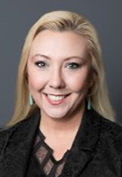Reflective Practice and Commitment to Personal Growth Well-Being Recognition and Mitigation of Bias Commitment to Professional Responsibilities
Universal Pillar 1: Reflective Practice and Commitment to Personal Growth
| Level 1 | Level 2 | Level 3 | Level 4 | Level 5 |
|---|---|---|---|---|
| Accepts responsibility for personal and professional development by establishing goals. | Demonstrates openness to performance data (feedback from learners and other input) to inform goals. Analyzes and reflects on the factors that contribute to gap(s) between expectations and actual performance. Designs and implements a learning plan, with prompting. | Seeks performance data episodically, with adaptability and humility. Analyzes, reflects on, and institutes behavioral change(s) to narrow the gap(s) between expectations and actual performance. | Independently creates and implements a learning plan. Consistently solicits specific performance data, with adaptability and humility, including from learners, that leads to behavior change. Challenges personal assumptions and considers alternatives in narrowing the gap(s) between expectations and actual performance. Uses performance data to measure the effectiveness of the learning plan and, when necessary, improves it. | Role models consistently seeking performance data with adaptability and humility and making positive behavior changes. Coaches others on reflective practice. Facilitates the design and implementation of learning plans for others. |
💡Improvement Idea 1: Faculty self-assess on performance and update professional development plan at least bi-annually.Tools: Implementation:
|
💡Improvement Idea 2: Faculty solicit peer feedback at least annually.Tools:
|
💡Improvement Idea 3: Identify/work with a mentor and/or coach to support development of strengths and address areas for growth that have been identified.Tools:
|
Universal Pillar 2: Well-Being
| Level 1 | Level 2 | Level 3 | Level 4 | Level 5 |
|---|---|---|---|---|
| Recognizes the importance of addressing personal and professional well-being. | Lists resources to support personal and professional well-being. | Assesses how personal and professional wellbeing impact one’s own clinical practice and teaching. | Proactively responds to the inherent emotional challenges of the clinician educator’s work and develops a plan to optimize personal and professional wellbeing. | Role models pursuit of optimal personal and professional well-being. |
💡Improvement Idea 1: Faculty self-assess on current well-being level (1–5) based on Universal Pillar 2 levels.Tools: Implementation:
|
💡Improvement Idea 2: Based on self-assessment of current level, faculty engage in activity/reflections described by current level and develop a plan (including a SMART goal) for moving toward next level engagement in well-being.Tools:
|
Universal Pillar 3: Recognition and Mitigation of Bias
| Level 1 | Level 2 | Level 3 | Level 4 | Level 5 |
|---|---|---|---|---|
| Identifies common and complex biases to effective education and patient care (e.g., language, disability, cultural differences, internalized oppression) | Proactively seeks to assess and reflect on one’s personal biases, both explicit and implicit | Identifies strategies to mitigate the effects of bias on effective education and patient care | Addresses personal biases and proactively mitigates the effects of personal bias in effective education and patient care | Mentors others on recognition and mitigation of bias |
💡Improvement Idea 1: Faculty self-assess on current level (1-5) based on Universal Pillar 3 levels.Tools: Implementation:
|
💡Improvement Idea 2: Faculty select from available resources to implement SMART goal professional development.Tools:
|
Universal Pillar 4: Commitment to Professional Responsibilities
| Level 1 | Level 2 | Level 3 | Level 4 | Level 5 |
|---|---|---|---|---|
| Demonstrates the basic standards of the profession and presents "fit for duty". | Is timely in the performance of duties and takes responsibility for follow-up on details. | Takes responsibility for errors/professional lapses and initiates corrective action when indicated. | Recognizes personal risks to professional behavior and effectively manages those risks to produce the best outcome. | Consistently role models professional behaviors in the learning and working environment. |
💡Improvement Idea 1: Faculty self-assess on current level (1–5) based on Universal Pillar 4 levels.Tools: Implementation:
|
Literature search resources
- PubMed
- Academic Medicine Journal*
- Medical Teacher Journal*
- MedEdPortal.org repository
*Access via University of Arizona College of Medicine – Phoenix institutional subscriptions available via login to Arizona Health Sciences Library portal
Do you have a tool to share or need more help?

